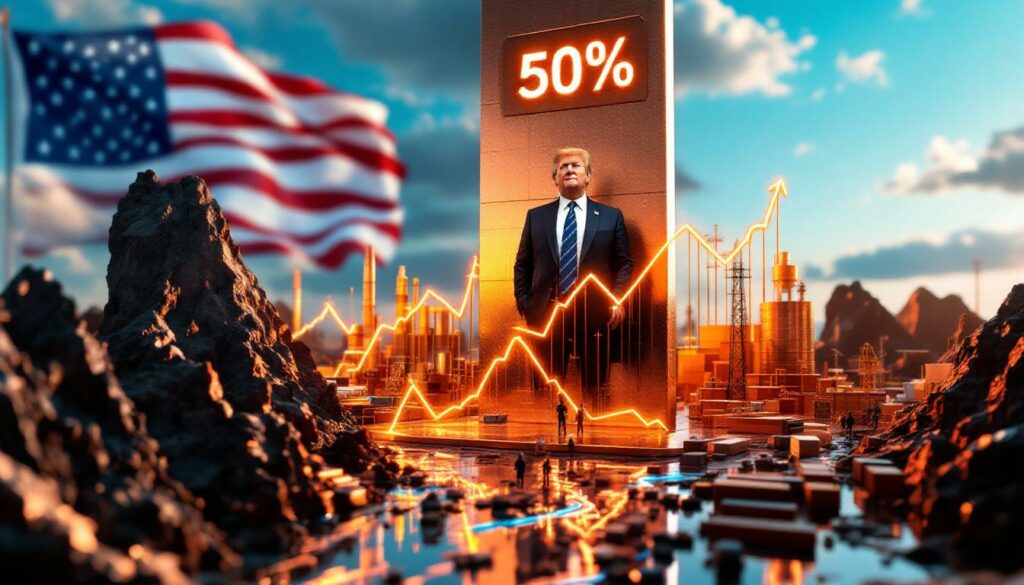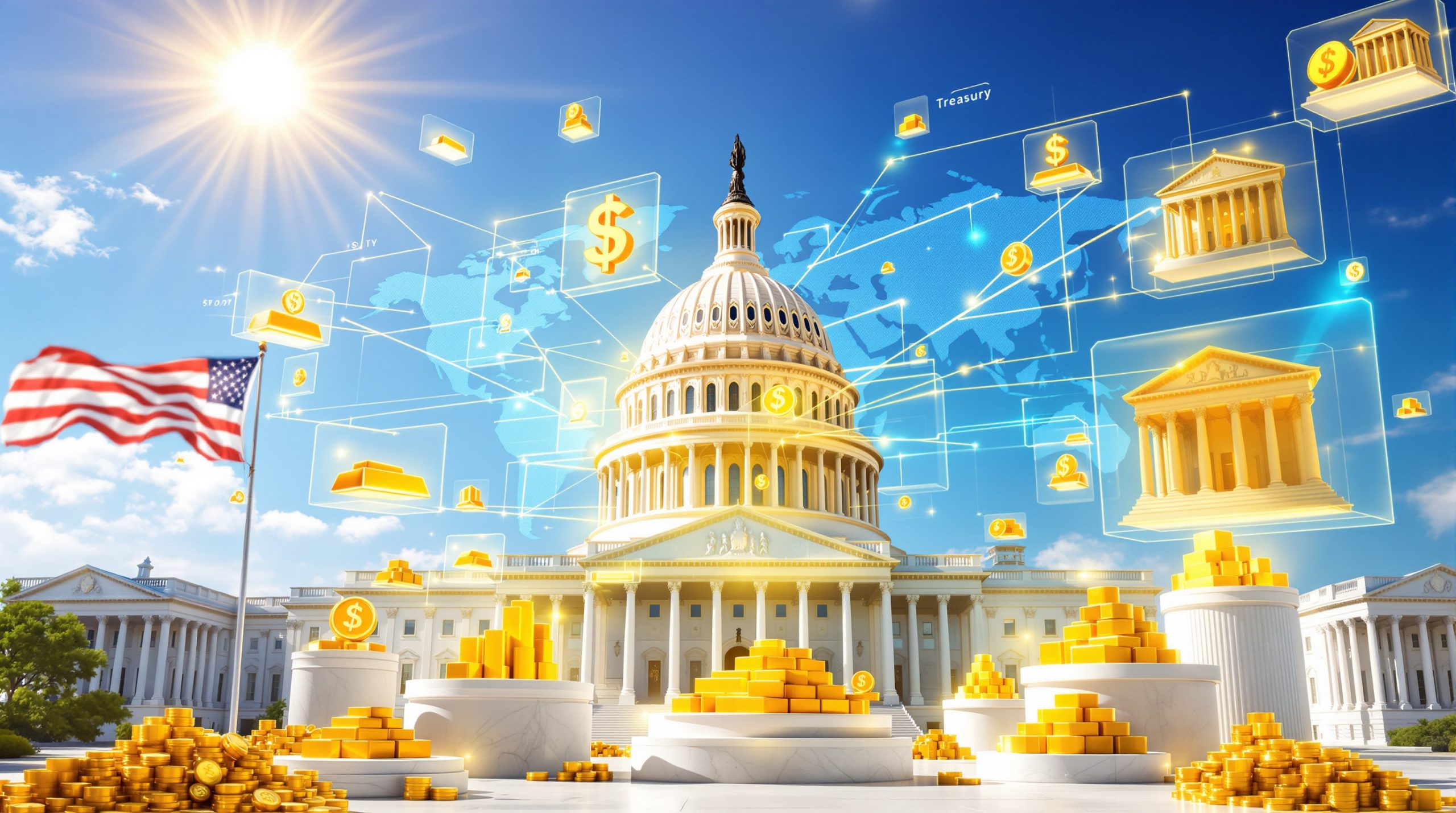Understanding Trump's 50% Copper Tariff: Impacts and Implications
The metal markets were jolted this week when President Trump announced a sweeping 50% tariff on semi-finished copper products and copper-intensive derivatives, set to take effect August 1, 2025. This dramatic policy shift follows a Section 232 investigation initiated in February 2025 that determined foreign copper imports constitute a national security threat to the United States.
Unlike previous commodity tariffs, this measure specifically excludes copper scrap and input materials such as ores, concentrates, mattes, cathodes, and anodes—a strategic carve-out designed to support domestic processing while ensuring raw material supply chains remain intact.
What Is the New Copper Tariff Policy?
The tariff represents one of the most aggressive trade actions on a single commodity in recent years. According to the White House fact sheet, the 50% duty will apply exclusively to semi-finished copper products—including wire, rod, tube, and bar—while explicitly exempting raw materials and scrap.
A particularly notable provision requires that 25% of high-quality U.S.-produced copper scrap be sold domestically rather than exported. This requirement aims to ensure American manufacturers have priority access to recycled materials.
"This policy is designed to rebuild America's critical mineral processing capacity that has been hollowed out by decades of unfair trade practices," stated the White House announcement.
The Section 232 investigation—a rarely used trade tool authorized under the Trade Expansion Act of 1962—allows the president to impose restrictions on imports deemed threatening to national security. While previous administrations have used this mechanism sparingly, the Trump administration has employed it more extensively, previously implementing tariffs on steel, aluminum, and now copper.
How Will This Tariff Affect Global Copper Markets?
The immediate market reaction has been significant volatility in copper futures. With copper currently trading at approximately $4.647 per pound (down 17.90% year-to-date), analysts predict further price swings as the market digests this policy shift.
"The tariff creates a two-tier global market," explains Mark Thompson, metals analyst at Capital Economics. "U.S. domestic prices will likely rise, while international prices could temporarily drop as material originally destined for America seeks new homes."
The long-term restructuring of the market could be profound. China, which processes approximately 70% of the world's refined copper, will need to redirect substantial volume to other markets. Meanwhile, U.S. processing facilities—which have declined from 15 major smelters in the 1980s to just three today—may see renewed investment interest.
Trade flows will likely shift dramatically, with countries like Chile and Peru (which together produce 40% of global copper) potentially seeking deeper partnerships with European and Asian markets to offset reduced U.S. access. The US‑China Trade War impact could further complicate these dynamics as geopolitical tensions influence commodity flows.
What Industries Will Be Most Impacted?
Downstream Manufacturing Sectors
The electronics industry stands to face some of the most significant challenges. Modern smartphones contain approximately 15 grams of copper each, while data centers use massive quantities for wiring and connectivity. With tight margins already squeezing hardware manufacturers, this additional cost pressure could accelerate price increases for consumer electronics.
The construction industry, which accounts for roughly 28% of copper consumption, will see impacts across electrical wiring, plumbing, and architectural applications. Industry experts estimate that copper components represent 3-5% of total building costs, a percentage that could now increase substantially.
Perhaps most significantly affected will be the electric vehicle and renewable energy sectors—both critical to America's clean energy transition. Modern electric vehicles require approximately 85-100 kg of copper per unit (compared to just 15-20 kg in conventional vehicles), primarily for batteries, wiring, and motors.
"Every megawatt of solar capacity requires about 5 tons of copper, while offshore wind installations can use up to 15 tons per megawatt," notes the International Energy Agency's Critical Minerals Report.
Upstream Mining Operations
For domestic copper miners like Freeport-McMoRan and Rio Tinto's U.S. operations, the tariff represents a potential windfall. U.S. mines produced approximately 1.4 million metric tons of copper in 2023 (according to USGS data), meeting only about half of domestic demand.
The recycling industry stands to benefit significantly from the tariff's exclusion of scrap copper. The U.S. generates about 1.8 million metric tons of copper scrap annually, with roughly 900,000 tons exported. With the new domestic sales requirement, recyclers may see higher domestic prices and increased processing investment.
International copper producers will face pressure to establish processing facilities within the U.S. or develop alternative markets. Chile's state-owned Codelco, the world's largest copper producer, derives nearly 15% of its revenue from U.S. sales that would now face significant tariffs.
How Does This Fit Into Trump's Broader Trade Strategy?
The copper tariff follows a pattern established during Trump's previous administration, where Section 232 was used to impose 25% tariffs on steel and 10% on aluminum imports in 2018. Those measures drew significant international backlash, including WTO challenges and retaliatory tariffs.
What distinguishes this action is its surgical precision—targeting semi-finished products while exempting raw materials. This structure aims to encourage domestic processing without strangling supply chains, a more sophisticated approach than previous Trump tariff precedents.
The policy aligns with a broader economic nationalism focused on reshoring critical industries. The administration has emphasized copper's role in national security applications, including defense systems, electrical grids, and telecommunications infrastructure.
"This represents a more targeted application of tariff policy," explains Dr. Sarah Johnson, trade policy expert at Georgetown University. "Rather than broadly taxing imports, it's designed to reshape the value chain by encouraging domestic processing of both imported raw materials and recycled scrap."
The geopolitical dimensions are particularly significant given China's dominance in global copper refining. Chinese companies have dramatically expanded their control over processing capacity while also securing supply through investments in mining operations across Africa and South America. This tariff effectively creates economic pressure to rebalance that influence.
What Are the Economic Implications for the U.S.?
Proponents argue the tariff will revitalize America's declining copper processing sector. The U.S. currently has only three major copper smelters, down from 15 in the 1980s, with capacity utilization hovering around 80%. Industry analysts suggest the tariff could trigger $2-3 billion in new processing investments over the next five years.
Job creation potential varies by analysis, but the Bureau of Labor Statistics data shows the copper mining sector currently employs approximately 6,500 workers directly. Processing facilities typically generate 2-3 times more jobs than mining operations for equivalent output, suggesting thousands of potential new positions.
"Processing capacity follows tariff protection," notes Michael Rodriguez, former advisor to the U.S. Trade Representative. "We saw this with aluminum, where several idled smelters restarted after the 2018 tariffs."
However, downstream manufacturers face significant challenges. The National Association of Manufacturers estimates that every job created in metals processing costs 3-5 jobs in metal-using industries due to higher input costs. Electronics manufacturers, particularly those competing internationally, may struggle to absorb these increased expenses.
Inflationary pressure represents another concern. Copper components contribute 3-8% of production costs across various manufactured goods. With already elevated inflation rates, economists caution that passing these costs to consumers could further strain household budgets.
How Might Other Countries Respond?
If history provides any guidance, retaliatory measures are almost certain. Following the 2018 steel and aluminum tariffs, China responded with $16 billion in counter-tariffs targeting U.S. agricultural exports. The European Union imposed duties on $3.2 billion in American goods, strategically targeting politically sensitive products from key electoral states.
For copper, Chile and Peru have the most at stake. Together they account for over 40% of global copper production, with substantial export volume to the United States. Both countries maintain free trade agreements with the U.S. that could provide legal avenues to challenge these tariffs.
China, as the world's largest copper consumer and processor, possesses significant leverage. Beyond retaliatory tariffs, it could accelerate efforts to secure non-U.S. supply chains and potentially manipulate global markets through its substantial copper stockpiles.
"The WTO dispute settlement mechanism provides one avenue for challenging these tariffs," explains international trade attorney James Wilson. "However, the national security justification makes these cases particularly complex, as we saw with the steel and aluminum disputes that remained unresolved for years."
What Does This Mean for Copper Supply Chains?
In the immediate term, supply chain participants face significant disruption. Contracts negotiated based on current trade patterns may require renegotiation, and logistics systems optimized for established trade flows will need reconfiguration.
Inventory management becomes particularly challenging during the transition period. Importers may accelerate shipments to beat the August 1 implementation date, creating temporary surpluses followed by potential shortages as supply chains adjust.
Documentation requirements represent another complication. Distinguishing between tariffed and exempt copper categories requires origin verification and proper classification—administrative burdens that particularly impact smaller businesses.
Long-term structural changes could be profound. Global copper processing capacity, currently concentrated in China (70% of global capacity) and Chile (8%), may see geographic redistribution. U.S. processing facilities will likely expand, while secondary processing hubs in Southeast Asia and Europe may also benefit as material diverts from the U.S. market.
How Will This Affect Copper Prices?
Price impacts will likely manifest differently across product categories and geographies. Within the U.S., semi-finished copper products subject to the tariff could see price increases approaching 30-40%, as the full tariff is rarely passed through completely.
Meanwhile, international markets may experience temporary price suppression as material originally destined for the U.S. seeks alternative buyers. This divergence creates arbitrage opportunities for traders who can navigate the regulatory requirements.
"We expect significant price volatility through at least Q4 2025," predicts Maria Sanchez, commodities strategist at Goldman Sachs. "The market needs time to establish new equilibrium points both domestically and internationally."
For companies exposed to copper price risk, hedging strategies will require reevaluation. Traditional futures contracts may not adequately address the emerging price differentials between U.S. and international markets. More sophisticated approaches involving basis swaps or location spreads may become necessary.
The LME (London Metal Exchange) and COMEX (Chicago Mercantile Exchange) may develop new copper contract variations to address the emerging two-tier market, similar to the aluminum premium contracts created following the 2018 tariffs. Recent copper price predictions suggest substantial volatility ahead as markets adapt to these new policies.
What Are the Environmental Implications?
The environmental impact of reshaping copper supply chains deserves careful consideration. U.S. copper processing facilities operate under stringent environmental regulations, potentially reducing the global carbon footprint of copper production if they displace operations in regions with less rigorous standards.
However, shifting production locations could increase transportation emissions if supply chains become less efficient. A copper cathode produced in Chile but processed in China before reaching U.S. manufacturers represents a substantially different carbon footprint than one processed domestically.
The tariff's exclusion of scrap copper could accelerate circular economy initiatives by increasing the economic value of recycling. Copper is infinitely recyclable without losing performance, and recycled copper requires only 15% of the energy needed to mine and refine virgin material.
"Secondary copper production—recycling—produces about 65% less CO2 than primary production," notes the International Copper Association. "Policies that encourage domestic recycling could yield significant environmental benefits."
FAQ: Trump's Copper Tariff Policy
Will the copper tariff affect consumer electronics prices?
Analysts project modest but noticeable impacts on consumer electronics. Smartphones contain approximately 15 grams of copper, representing about $0.20-0.30 in material costs at current prices. While this may seem minimal, industry experts note that in the highly competitive electronics market, even small cost increases can impact pricing strategies or feature decisions.
Larger items like appliances contain significantly more copper—approximately 2-5 kg in refrigerators and 1-2 kg in washing machines. Manufacturers may absorb some costs initially but will likely pass increases to consumers over time, potentially adding $20-50 to larger appliances.
How might this impact the renewable energy transition?
The renewable energy sector's copper intensity makes it particularly vulnerable to price increases. Solar installations require approximately 5 tons of copper per megawatt, while offshore wind facilities use up to 15 tons per megawatt. Industry analysts project that the tariff could increase renewable project costs by 1-3%.
Energy storage systems, critical for grid stability with intermittent renewables, are similarly copper-intensive. A typical grid-scale battery installation requires 10-15 tons of copper per megawatt-hour of storage capacity.
Project developers may explore alternative materials where possible, but copper's unique conductivity properties make substitution difficult. Aluminum can replace copper in some applications but requires approximately 1.5 times the volume to achieve equivalent conductivity and presents different engineering challenges.
What options do affected businesses have to adapt?
Companies facing higher copper costs have several strategic options:
- Supply chain restructuring: Sourcing copper-intensive components from countries with existing free trade agreements or negotiated exemptions.
- Tariff engineering: Redesigning products or supply chains to utilize exempt categories where possible.
- Material substitution: Replacing copper with alternatives like aluminum for appropriate applications.
- Vertical integration: Investing in domestic processing capacity to secure supply.
- Price adjustments: Passing costs to customers where market conditions permit.
Manufacturers with global operations may shift copper-intensive production to facilities outside the U.S., using domestically produced components primarily for products with less price sensitivity or regulatory requirements mandating U.S. content.
Further Exploration
The copper tariff represents a significant shift in U.S. trade policy with far-reaching implications for global markets, manufacturing, and environmental initiatives. As implementation approaches, affected industries are developing adaptation strategies while international partners consider their responses.
This evolving situation warrants ongoing attention, particularly regarding implementation details, potential exemptions, and international reactions. The global copper supply forecast will need to be reassessed as market participants adjust to these new trade barriers. Additionally, the copper investment outlook may shift dramatically as capital flows respond to changing market conditions.
For those involved in copper-intensive industries, developing scenario plans addressing various possible outcomes—from full implementation to negotiated modifications—represents a prudent approach to managing this significant market disruption.
Disclaimer: This analysis represents current understanding of announced policies and projected impacts. Actual implementation details and market responses may differ from these projections. This information should not be considered investment advice or a comprehensive assessment of all potential outcomes.
Want to Profit from the Next Major Mineral Discovery?
Discovery Alert's proprietary Discovery IQ model instantly notifies investors of significant ASX mineral discoveries like potential copper opportunities, transforming complex data into actionable insights for both short-term traders and long-term investors. Understand why major discoveries can generate substantial returns by visiting Discovery Alert's dedicated discoveries page.




